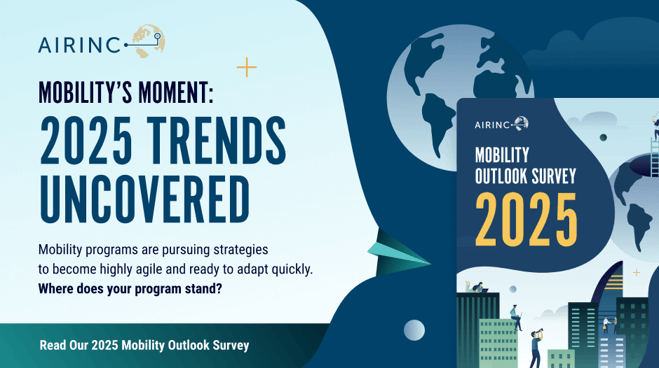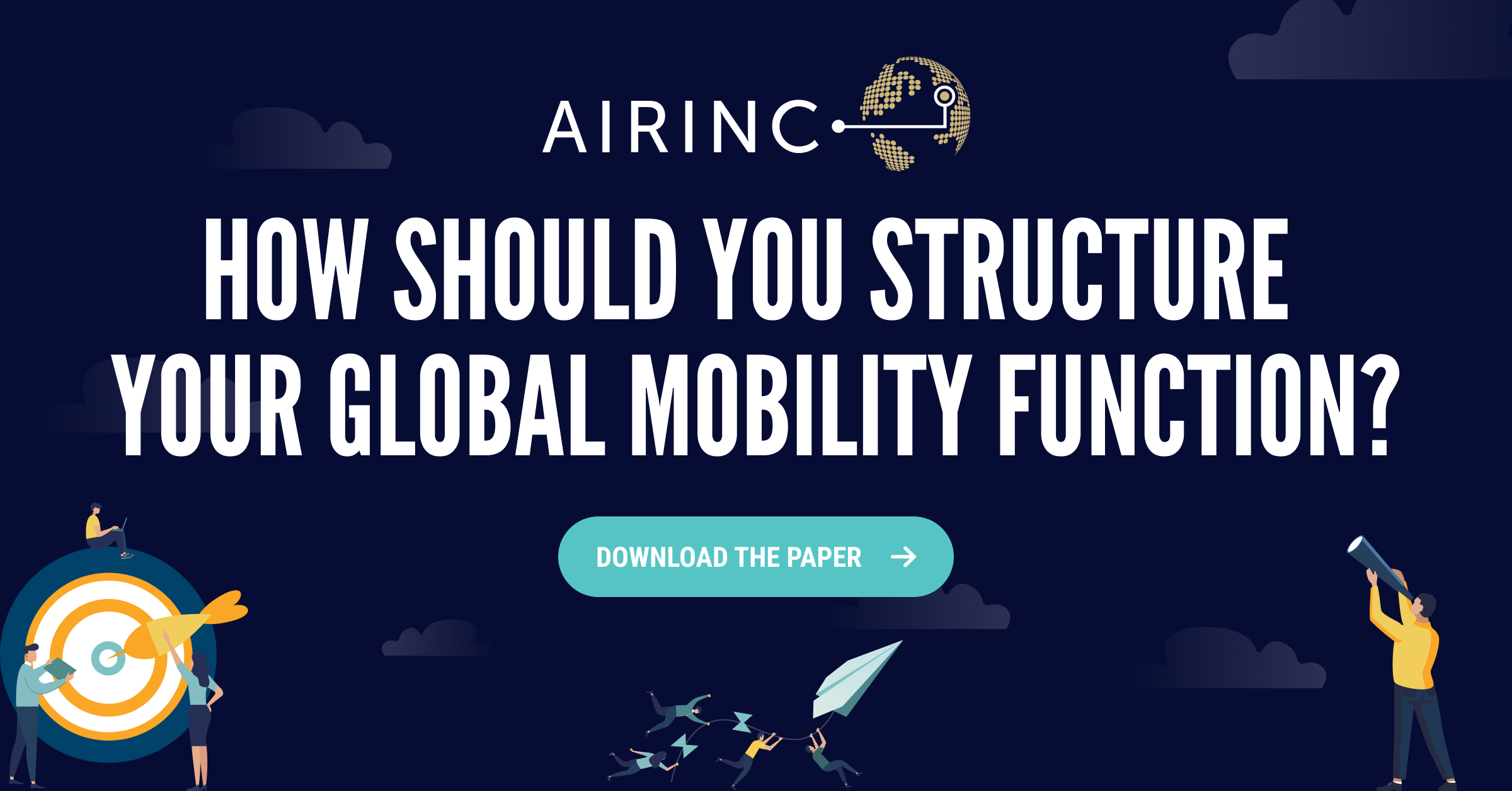Global mobility doesn’t stand still. Every roundtable we host confirms this—and our latest EMEA Strategic Leader session was no exception. Behind the scenes, I have the privilege of supporting these events from a marketing perspective.
While I’m not on the front lines solving mobility challenges, it is fascinating to sit in and listen to the real life stories from forward-thinking mobility leaders. Here is a summary of the discussion of how mobility is tackling the issues of the day including increasing complexity, tighter budgets, changing expectations, and the need to prove strategic value.
Flexibility Is Being Redefined
We opened with AIRINC’s 2025 Mobility Outlook Survey, which highlighted five key forces shaping the future of mobility: agility, innovation, AI integration, strategic alignment, and success measurement.
More companies are shifting away from rigid assignment types in favor of flexible structures like core/flex models and points-based systems. These allow for more tailored support, but they’re not without challenges. Equity, cost management, and consistent messaging all require careful planning.
Some teams shared that they’ve had strong initial results; others pulled back when implementation proved too complex. It shows that meaningful innovation requires patience and persistence, not quick fixes.
Listening to Assignees Is a Must
What stood out in this session was the emphasis on listening—really listening—to assignees. Surveys are still used, but more companies are moving toward direct conversations, often including family members on assignment too. These deeper insights help uncover issues that a simple 'form' might miss.
Sending feedback requests from the GM team contacts rather than vendors improves engagement, and critically, teams are focusing more on closing the loop by actually showing employees that their feedback leads to improvements. That last part is what helps builds trust.
Simplification Through Digital Tools
Mobility teams are being asked to deliver more with fewer resources. This has resulted in smarter use of technology and streamlined workflows. Some have cut back on internal documentation, turning instead to vendor tools for budgeting and policy management.
Another theme that emerged: the importance of removing internal jargon and communicating more clearly. Mobility is increasingly part of the broader 'talent' conversation, and the way it’s presented needs to reflect that.
Repatriation: Still One of the Toughest Parts
Repatriation continues to be a stumbling block. Without clear post-assignment career paths, some employees end up reassigned, while others disengage—or exit altogether.
A few organizations are now requiring a reintegration plan before the assignment even begins. Short-term assignments are also growing in popularity, especially where long-term roles post-return aren’t guaranteed. And while mobility and talent functions are collaborating more, many teams still sit under HR operations or rewards, limiting career visibility.
Tracking what happens after the assignment is becoming more important—and more expected.
Moving Beyond “No Complaints” as a Metric
Mobility success is being redefined. Many are moving past the old “no news is good news” mindset and instead looking at outcomes like career development, retention, and business impact.
Policy exceptions are also being tracked more deliberately. Some organizations are even classifying them further. Distinguishing between operational hiccups and strategic exceptions that deserve leadership attention.
Increasing Access for Early-Career Talent
There’s growing demand for mobility among junior employees but budget constraints mean shorter, lower-cost assignments are gaining traction. These 4 to 6 month moves offer valuable experience without requiring major investment.
Funding models vary. Some centralize mobility costs; others ask receiving units to cover them, which can raise concerns about transparency and fairness. What’s clear is that demand exceeds supply, and companies are having to prioritize assignments based on both business need and developmental value.
AIRINC run various roundtables across the all of our regions. Contact us to learn more.



%20(19).png)

.jpeg)
%20(28).png)


